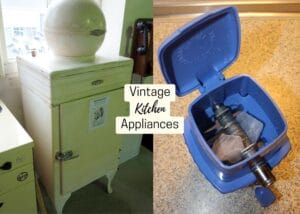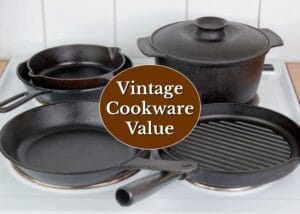If you’re planning to donate or toss your old toaster, coffee grinder, or mixer, STOP NOW! You could be giving away a small fortune with those vintage kitchen appliances without even knowing it!
From mid-century stand mixers in pastel colors and Art Deco chrome toasters to old waffle irons, find out which vintage appliances in your kitchen are worth holding on to. And find out how to tell if an appliance is really valuable or just junk!
13 Retro Kitchen Appliances Worth a Fortune!
1. Ovens (Built-in & Stand Alone)
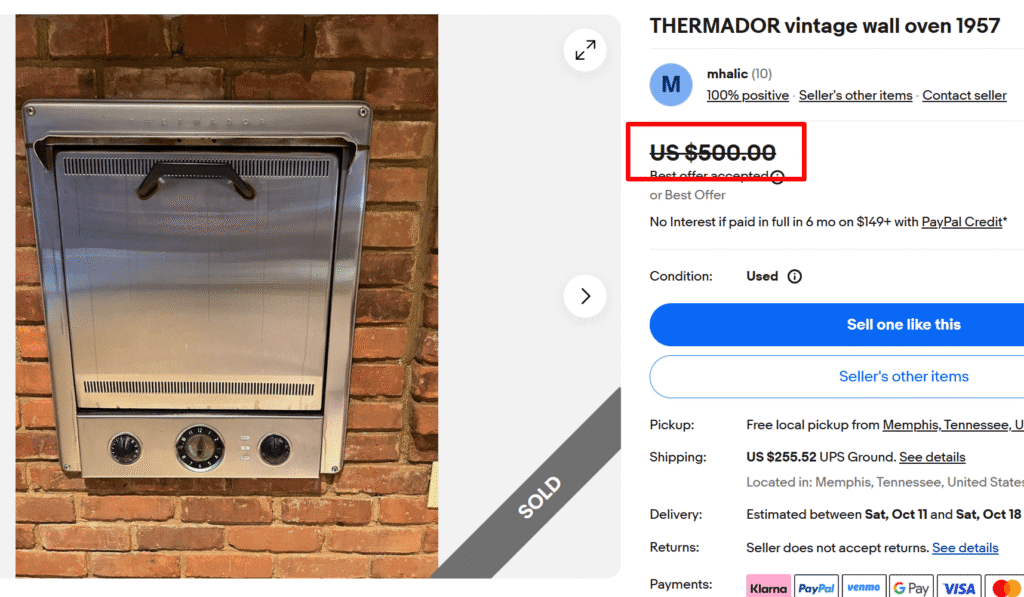
Vintage ovens range from miniature model toys to large mid-century range kitchen ovens. Electric ranges became popular from the 1930s through to the 1950s as a cleaner cooking platform than a gas stove.
Today, heavy chrome-framed models with added features like griddles and timers are very popular to collect. Among the more desirable models are built-in electric ranges by Thermador, Tappan, and O’Keefe & Merritt in odd colors, like turquoise or pink!
2. Refrigerators
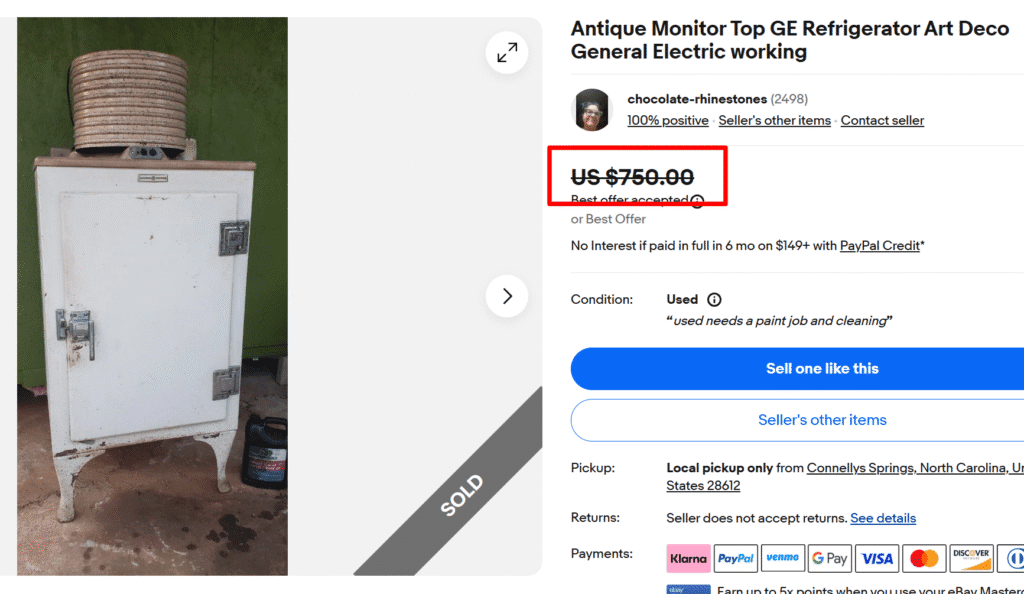
Electric refrigerators replaced iceboxes in the 1920s and 1930s and completely changed the way people stored food. The oldest and most desirable models are the General Electric Monitor-Top from the 1920s and 1930s, worth around $500 to $2,000.
These models had a visible round cooling mechanism mounted on top. But later on, it was all fitted inside to give a sleek look to the appliance. 1950s Frigidaire and Philco models in original pastel colors are also in demand.
3. Mid-century Stand Mixers
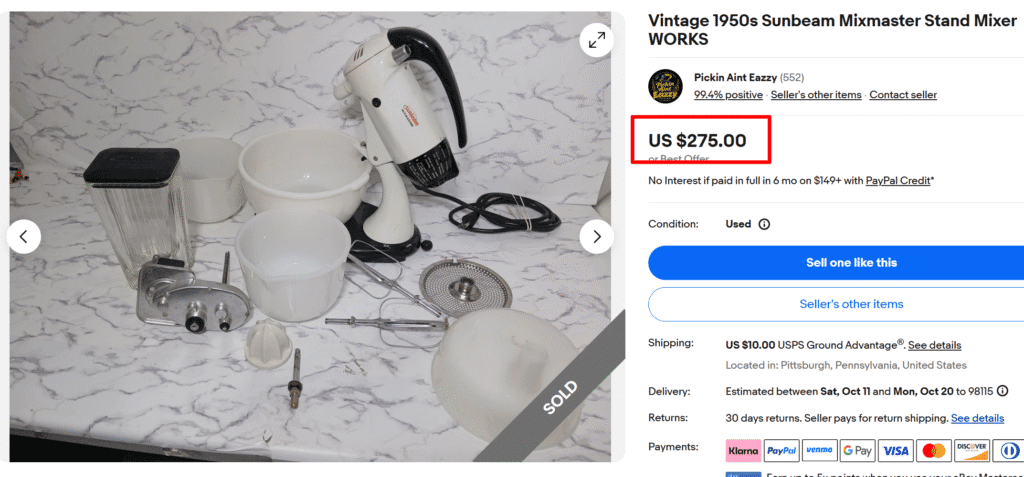
The motorized beaters mounted on a stationary base transformed the way women baked stuff. Herbert Johnson created the first electric stand mixer for commercial use in 1908, with home versions appearing in the 1920s.
The real collectibles are the 1937 KitchenAid Model K and Sunbeam Mixmasters in original pastel colors. Be sure always that the motor works and all original attachments are present; a functioning mixer is worth a premium.
4. Toasters

Electric toasters showed up around 1909, but you still had to flip the bread manually. Pop-up toasters came along in the 1920s. The earliest rare 1900s GE electric toasters with a ceramic porcelain finish can command hundreds.
Early classic designs by makers like Toastmaster in the 1930s-40s with their clean, angular chrome edges, are worth something as well.
5. Waffle Irons
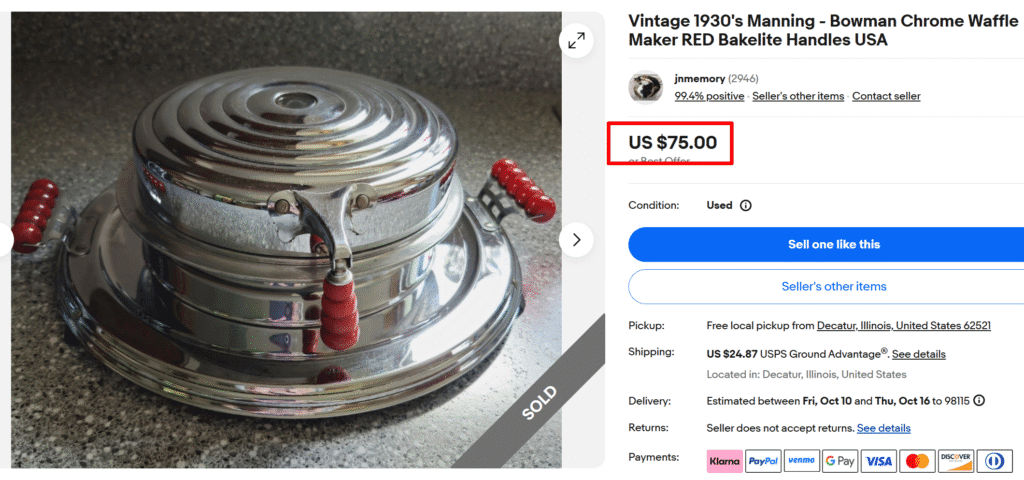
The electric waffle iron has been a kitchen staple since the 1920s. It’s the heavy chrome models by companies like Manning-Bowman or Toastmaster that collectors look for. These often featured decorative handles and a flipping mechanism to cook perfectly on both sides.
But these efficient versions can’t outprice those heavy cast-iron models from Wagner and Griswold. They can sell for over $1,000 in pristine condition.
6. Hot Air Popcorn Popper
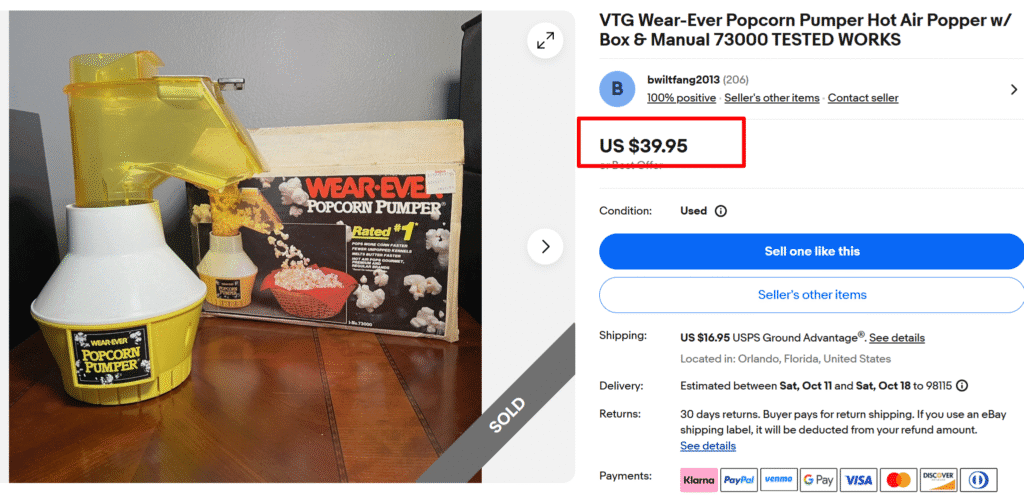
Before the invention of microwave popcorn bags as a standard kitchen item, the countertop popper was the standard. These small appliances from the 1950s and 1960s had electric elements and came in fun, spaceship-like designs, like those made by Wear-Ever. Look for models in bright, atomic-age colors and make sure the plastic dome isn’t cracked.
7. Coffee Grinders
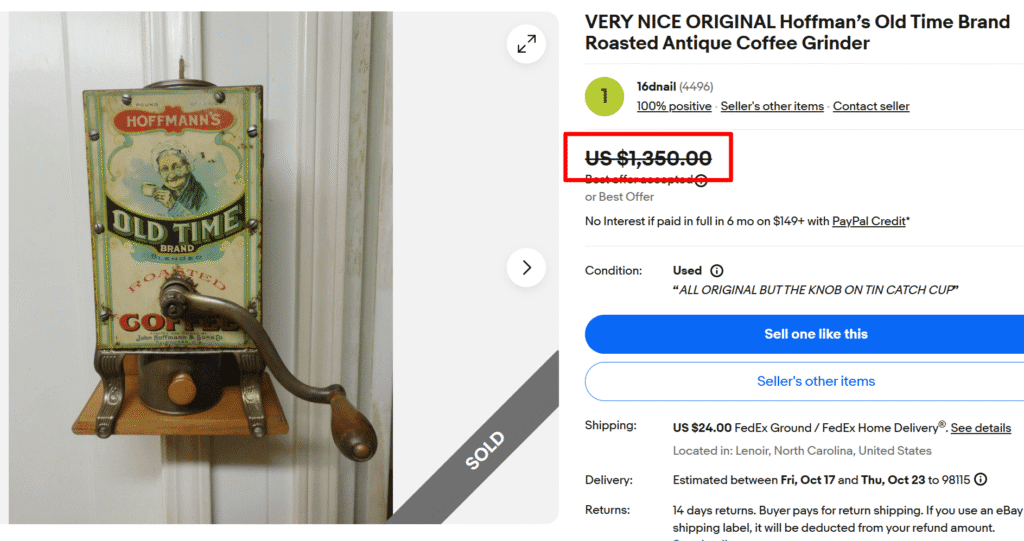
Old cast-iron mill grinders from the late 1800s to early 1900s that stood or were mounted right on kitchen walls have great aesthetic appeal. Especially hand-crank models from the 1800s with porcelain hoppers and metalwork outprice the electric models.
Brands like Enterprise made robust models that are still functional today. The value for these appliances is often tied to the color of the original paint; the rarer and brighter the color, the better, and whether the little wooden catch box is still attached.
8. Electric Hot Water Kettles
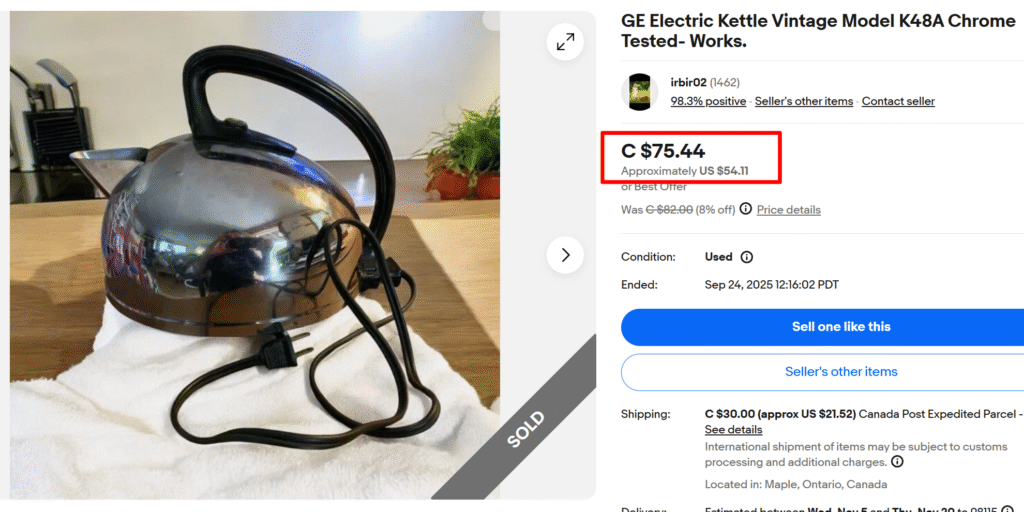
The first electric kettle was made back in 1891, but it wasn’t until the 1920s that these appliances became efficient. From the 1920s and 1930s and on, the kettles were made of heavy chrome or copper and were Art Deco or Art Nouveau in design.
Look for chrome streamlined kettles by Manning-Bowman or Sunbeam, and Russell Hobbs models with automatic shut-off. These models are quite collectible but cannot be compared to the old cast-iron kettles of the 19th century.
9. Ice Crushers
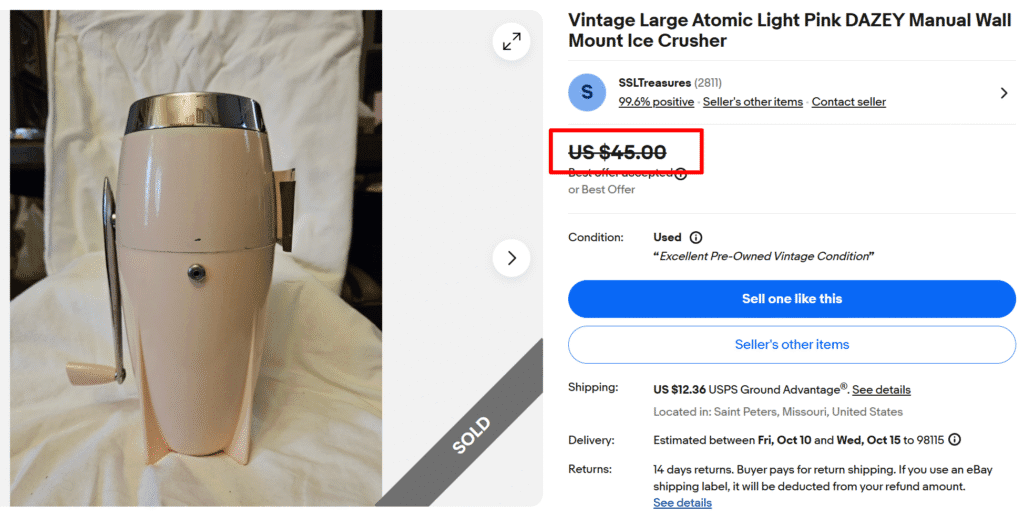
Ice crushers were fun accessories for home bars and kitchens. These used rotating blades or crushing mechanisms to break ice blocks into small chunks for drinks. Today, they’re collectible. Look for hand-crank models from the 1940s through 1960s, especially those brightly colored die-cast models by Dazey or Swing-A-Way.
10. Electric Can Openers
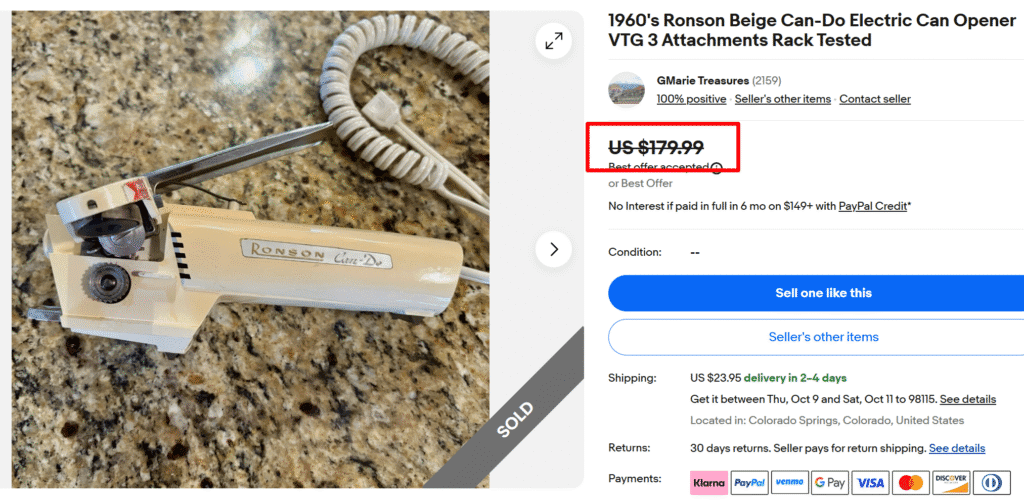
The electric can opener was quite new for Americans when it hit the market in the 1950s. These small appliances use motorized cutting wheels to remove can lids automatically. By the 1960s, wall-mounted versions became kitchen staples.
These handy appliances are worth moderately, from $20 to $250, but unusual colors and GE’s under-cabinet “Spacemaker” versions in original packaging have also reached $50-$100. Collectors also love early commercial-grade Edlund openers!
11. Juicers & Citrus Pressers
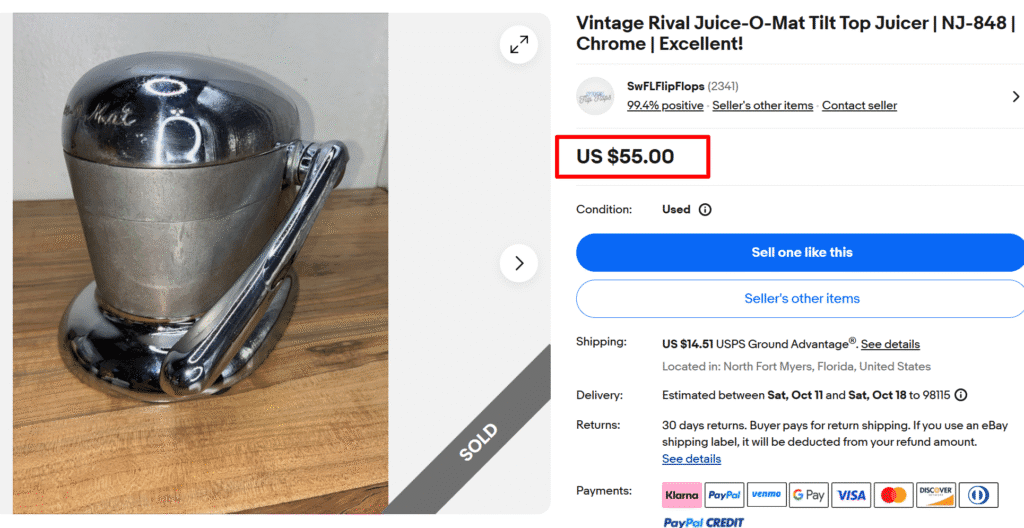
What were once manual citrus reamers became electric juicers during the 1930s. There was now hassle-free, fresh juice every morning in every American home. Many companies made these, including Rival, Sunkist, and Sunbeam, from the 1930s to the 1950s.
A fine example is the nostalgic Juice-O-Mat with peak Art Deco design ($50 to $150). Victorian cast-iron mechanical squeezers and Manning-Bowman streamlined models are also highly desirable.
12. Electric Skillets
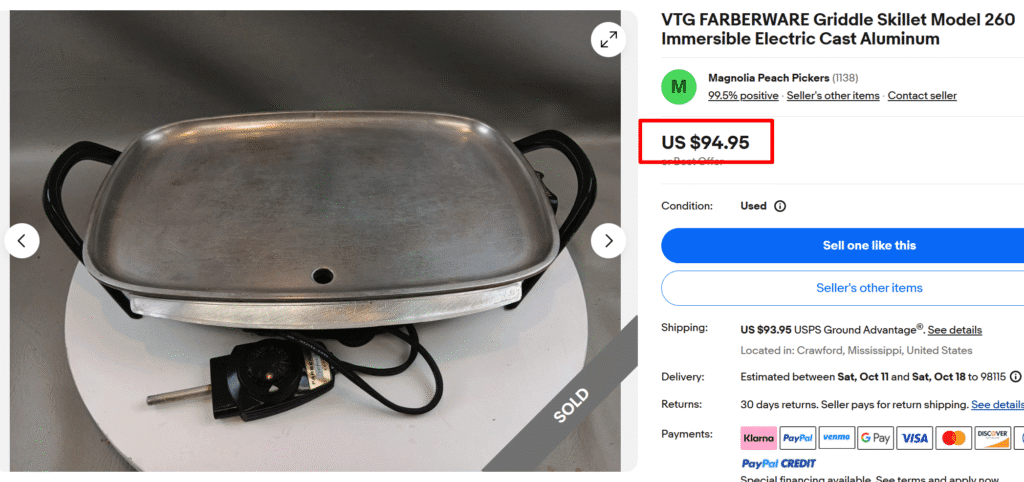
Electric skillets appeared in the 1950s with temperature and heating controls. Convenient cooking without taking up stovetop space, and women liked it. Popular models like Sunbeam Frypans during the 1950s and 1960s, West Bend copper-tone models, and colored Farberware models are collector favorites.
13. Dishwasher Sink
This is one of the most unusual vintage kitchen appliances you will ever come across! For a brief time in the 1940s and 50s, some companies, including General Electric, provided one unit that served as both a kitchen sink and a dishwasher built right underneath.
But this extremely odd concept was an experimental design failure, and hence, any surviving, intact model is extremely rare and expensive.
How to Know If Your Old Appliances Are Valuable?
Not every old appliance is going to be worth hundreds; some will sell for only a few tens of dollars, even if they are big. Value actually depends on other factors, including condition, brand, and rarity, among others.
- Does It Work?: This first and most important thing! A vintage toaster that still makes toast or a mixer that still turns is worth considerably more than a non-working display piece. Functionality matters most to collectors.
- Condition Matters: Beyond functionality, assess the condition. Is the chrome still shiny without pitting? Is the original enamel paint bright and unchipped? Minimal rust, light dents, and small scratches are acceptable, but major damage drops the price.
- Brand & Era: Appliances from respected companies, like Hobart, Chambers, or Toastmaster, are usually sought after. Brand reputation and quality construction translate to higher values. Lesser-known brands, even in good condition, are worth less.
- Completeness: Does it have all original parts? The instruction manual, correct power cord, or specific attachments, as well as original boxes, mean a lot to collectors. Missing pieces reduce the value, though it remains in fine working order.
- Design Appeal: The value of vintage appliances also depends on their design. Iconic styles, like beautiful Art Deco chrome from the 1930s or fun atomic-age colors from the 1950s, often fetch premium prices.
Note: This article is intended for informational, educational, and entertainment purposes only. Some images are illustrative and may not represent actual brands, products, or related entities. All trademarks, product names, brand logos, packaging, and other intellectual property referenced remain the exclusive property of their respective owners. Any brand mentions or references are provided solely for descriptive and educational context and do not imply any formal or commercial association.

